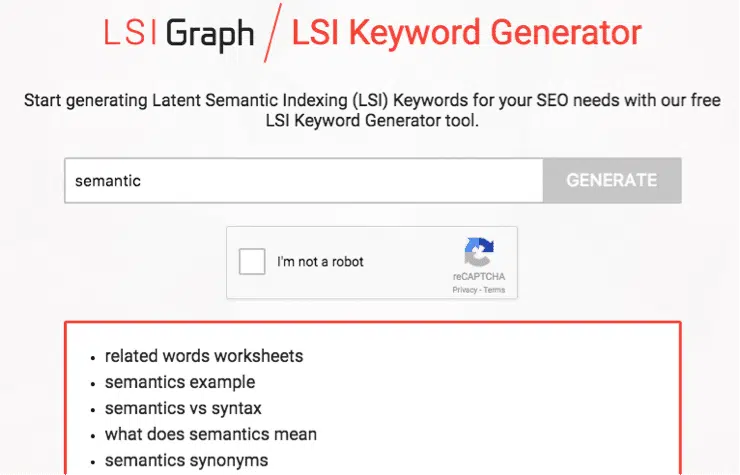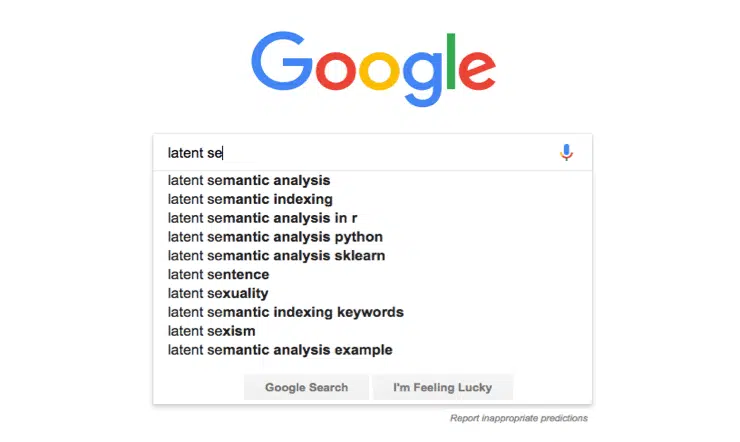Ever since Google became the dominant force in search, there’s been an ever-evolving battle between them and SEOs attempting to get their businesses to rank better than competition. Along the way, it’s often been a game of cat and mouse. SEO teams would manipulate websites with illogical keyword use, spammy link tactics, and potential black hat techniques –we won’t go down that rabbit hole – until Google revised its algorithms and sent SEOs back to the drawing boards.
Flash forward to today and Google’s team has created brilliant, complex algorithms that have eliminated many of the broken tactics SEOs relied upon for so long. The goal of a good SEO is now what it should have always been: create a fast, reliable, navigable website with great, relevant content.
But how do you improve your content’s relevance if keyword stuffing/spamming is viewed negatively? Enter – in part – latent semantic indexing keywords.
What is Latent Semantic Indexing?
It’s understandable if your eyes glazed over momentarily upon reading the term. What it does is luckily simpler than understanding how it works. LSI is a mathematic algorithm which essentially seeks out all relative phrases and synonyms connected to your focus keyword. For example, an LSI keyword for biography would be “bio.” This is an easy one, but LSI can also determine that “carpenter” is an LSI keyword for construction.
Read the following paragraph:
“What makes our cotton blue shirts the best cotton blue shirts that you can buy in a world of cotton blue shirts? They’re the best cotton blue shirts because we take natural blue and dip dye the cotton until we have the most attractive cotton blue shirts on the market. If you are looking for cotton blue shirts to upgrade your wardrobe, check out our selection below!”
In this case, the focus keyword phrase is “cotton blue shirts.” Google wants websites to create content that’s optimal for the consumer, and it doesn’t take Ernest Hemingway to tell you that rereading a single phrase 20 times is painful, literary detritus.
LSI keywords are therefore part of the solution to keyword stuffing. By finding the optimal LSI keywords for your content, you’re providing something far more enjoyable to read while simultaneously strengthening the keywords you want to focus on. It’s a win-win for everyone except the laziest of SEOs.
So How Do You Take Advantage of Latent Semantic Indexing?
The best way to optimize an LSI keyword strategy is to visualize a pyramid. At the very top is the most important keyword, dictated by research confirming it carries the most search value. These should be implanted within your title tags and headers, and then percolated into paragraphs where appropriate.
In the middle of the pyramid, compile research on synonymous and relative LSI phrases that are simultaneously valuable keywords on their own, and logically connect to the subject you are discussing. These can appear in less important headers such as h2’s lower on the page, h3’s, h4’s, and so forth, plus paragraphs as well.
Finally, one more batch of terms and phrases should be used for literary purposes. This last batch is for breaking up redundancy in your content, allowing readers to stay more engaged.
Finding the Right Keywords and Semantically Related Terms
If you’re new to SEO, there are dozens of tools that allow you to do research on which queries are more valuable than others. It will take some time, but eventually a combination of research and personal understanding of your business is going to create a rich database of keywords with their very own hierarchy.
Once you’ve compiled your data and found your focus keyword for the page you’re creating, here are a couple good ways to start finding related terms for LSI.
LSI Keyword Generators
Semantic keyword generators are the fastest way to begin compiling a large list of words for your content. And the good news is there are multiple platforms that are free to use, such as LSIGraph.com.
The drawback of these generators is you will find a fair share of phrases that aren’t exactly relevant to your topic. Still, this is a great place to start. Once you’ve generated a few lists of keywords, revise them for relevance and you’re good to go.
Google Toolbar Autocomplete:
Why not go directly to the source? In an effort to be more useful for searchers, Google’s toolbar provides predictions to help guide you to your answer more efficiently. This information is based upon its own data, and is influenced by what the most common searches phrases being utilized are. Consequently, this is perfect for you and your team to gain insight as to how people are searching for a topic in the first place!
While this is great for long-tail keywords, it isn’t so great for finding a great variety of synonyms. You’ll need to tinker with the phrases you implement, but the more you do it, the more you’ll start noticing patterns and gain valuable insight.
Trust Your Own Knowledge and Experience for Keyword Use
The more your company falls into a specific niche, the more your personal knowledge will be of benefit. Draw from this experience, because chances are that whatever you say in business conversations with clientele, they’re searching for it in similar terms. Reaching your target demographic is always the most important factor in finding convertible leads, so don’t be afraid use inside knowledge. It will provide a great foundation for starting your research, no matter what your business provides.
Get Help Creating Authoritative and Relative Content
Today’s Business is a digital marketing company that provides services for search engine optimization, along with social media marketing, website development, and much more. If your business wants to learn more about LSI, or is ready to take the next step in building its online footprint, contact us today.

